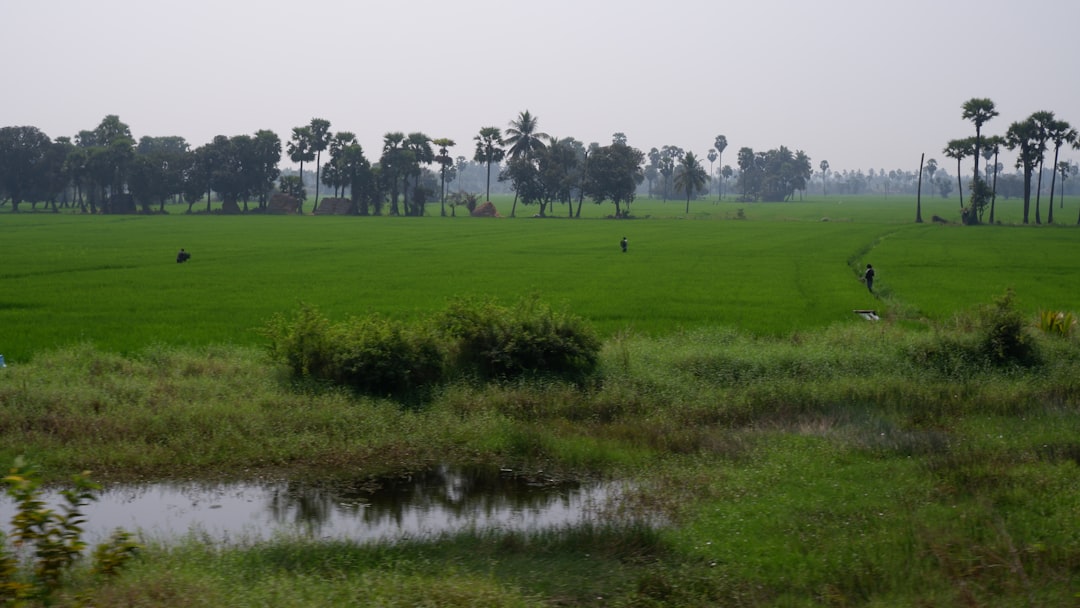Water is one of the most critical resources for farming, yet it’s often in short supply in many regions due to erratic rainfall patterns and climate change. Farmers worldwide are increasingly turning to water harvesting as a sustainable solution to collect and store rainwater for irrigation purposes. This practice not only reduces dependency on groundwater but also ensures that farms can thrive even during dry spells.
In this blog post, we’ll explore the concept of water harvesting, its benefits, and practical methods farmers can implement to make the most of rainwater.
What is Water Harvesting?
Water harvesting involves collecting rainwater from surfaces such as rooftops, fields, and roads and storing it for future use. This simple yet effective technique helps farmers manage water resources efficiently, especially in regions prone to water scarcity.
Key components of a water harvesting system include:
-
Catchment Area: The surface where rainwater is collected (e.g., rooftops, fields).
-
Conveyance System: Channels, pipes, or gutters to direct water to storage.
-
Storage Structures: Tanks, ponds, or reservoirs to hold the collected water.
Benefits of Water Harvesting for Farms
-
Reliable Water Supply:
Harvested water provides a consistent source for irrigation, especially during periods of low rainfall. -
Reduced Groundwater Dependence:
By collecting rainwater, farmers can reduce the strain on overexploited groundwater resources. -
Cost-Effective Irrigation:
Once set up, water harvesting systems save money on pumping and water transportation. -
Improved Soil Moisture:
Stored rainwater can be used for techniques like supplemental irrigation, ensuring crops remain healthy during dry periods. -
Environmental Benefits:
Reducing runoff minimizes soil erosion and prevents nutrient loss, improving soil health over time.
Effective Methods of Water Harvesting on Farms
1. Farm Ponds
Farm ponds are shallow depressions dug into fields to collect and store rainwater.
-
Best For: Large farms with adequate space.
-
Key Features:
-
Can be lined with clay or geomembranes to reduce seepage.
-
Water can be used for irrigation, livestock, or aquaculture.
-
2. Check Dams
Check dams are small barriers built across streams or rivers to slow down water flow and create storage pools.
-
Best For: Farms near seasonal streams or drainage lines.
-
Key Features:
-
Helps recharge groundwater.
-
Reduces downstream flooding and soil erosion.
-
3. Contour Trenches and Bunds
These are shallow trenches or embankments constructed along the natural contours of the land to trap rainwater.
-
Best For: Sloping terrains.
-
Key Features:
-
Slows down water runoff.
-
Enhances infiltration and prevents soil erosion.
-
4. Rooftop Rainwater Harvesting
Rainwater from rooftops can be collected and directed into storage tanks or underground reservoirs.
-
Best For: Farms with buildings or greenhouses.
-
Key Features:
-
Easy to set up with gutters and downspouts.
-
Provides clean water for irrigation and domestic use.
-
5. Percolation Pits
These are small pits filled with gravel and sand, designed to enhance groundwater recharge.
-
Best For: Farms with sandy or loamy soils.
-
Key Features:
-
Reduces runoff.
-
Improves the water table over time.
-
6. Polyethylene Tanks or Ferrocement Tanks
These tanks store harvested rainwater and can be customized for different farm sizes.
-
Best For: Small- to medium-sized farms.
-
Key Features:
-
Portable and easy to maintain.
-
Provides a reliable supply for drip irrigation or sprinkler systems.
-
Best Practices for Water Harvesting
-
Plan Based on Rainfall Patterns:
Understand the average rainfall in your region to determine the size and type of water harvesting system. -
Maintain Your System Regularly:
Clean gutters, pipes, and storage tanks periodically to prevent blockages or contamination. -
Combine with Efficient Irrigation:
Use drip irrigation or sprinklers to maximize the impact of harvested water. -
Prevent Evaporation Losses:
Cover storage structures with lids or floating materials to reduce water loss due to evaporation. -
Monitor Water Quality:
Ensure that harvested water is clean and free of pollutants, especially when used for crops.
Real-World Applications of Water Harvesting
India:
Farmers in Rajasthan use traditional water harvesting techniques like johads (earthen check dams) to capture rainwater for agriculture and recharge groundwater.
Kenya:
Smallholder farmers use rooftop rainwater harvesting systems and store water in plastic tanks for drip irrigation in vegetable farms.
Australia:
Large-scale farms implement farm ponds and contour bunds to collect and store water in dryland regions, ensuring a steady water supply year-round.
Challenges and Solutions
Challenge: High Initial Costs
-
Solution: Start small with basic systems like farm ponds or rooftop harvesting and expand as resources allow.
Challenge: Limited Awareness
-
Solution: Promote farmer training programs and community initiatives to demonstrate the benefits of water harvesting.
Challenge: Maintenance Issues
-
Solution: Create a maintenance schedule and involve local communities in upkeep.
Conclusion
Water harvesting is a vital practice for sustainable farming, especially in regions facing water scarcity. By collecting and storing rainwater, farmers can secure a reliable water supply, reduce environmental impact, and improve their agricultural productivity.
Whether you’re a small-scale farmer or managing a large farm, implementing water harvesting techniques can help you adapt to changing climates and ensure long-term sustainability.
Call to Action:
Have you tried water harvesting on your farm? Share your experience and tips in the comments below. Let’s inspire more farmers to make water harvesting a part of their farming journey!

Comments
No comments yet. Be the first to comment!
You must be logged in to comment. Login